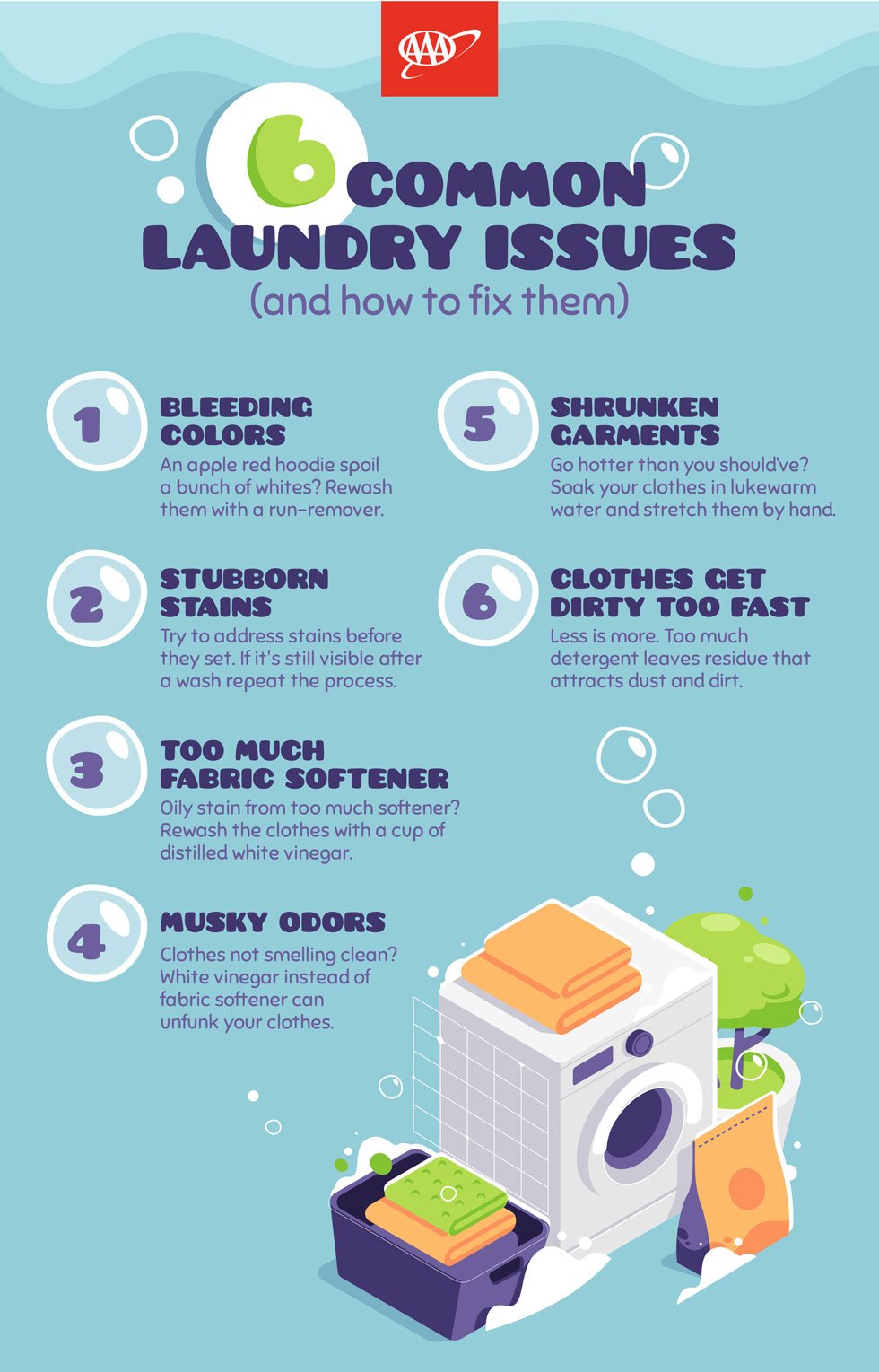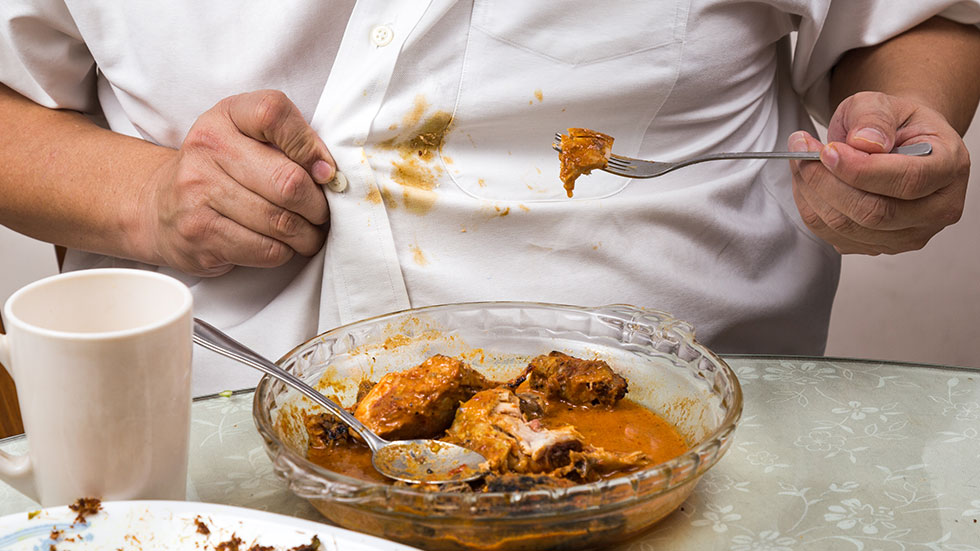
Doing the laundry should be easy—the washer and dryer handle the work for you, right? Wrong. A machine can’t tell if a fabric is colorfast or if a sweater will shrink. That’s on the operator, and humans make mistakes.
Fortunately, you can try to fix some mistakes—and vow not to repeat them in the future.

Bleeding colors
One apple-red hoodie can spoil a whole bunch of white clothes, but all is not lost.
Try rewashing damaged items with a product like Carbona Color Run Remover. (Note: Check the label, as some run-remover products are made for white clothes.)
If your white blouse has just one red spot, try soaking it in oxygen bleach. Use chlorine bleach only as a last resort, and only if the label recommends it.
To avoid bleeding colors: Always separate clothes by color, and ensure items are colorfast before washing them with other garments.

Stubborn stains
Don’t blame the machine. The best time to address a stain is before it sets. Tide’s website has a list of tips, and you can search for the solution by typing in the offender, such as deodorant or ink.
When removing clothes from the washer, do a spot check before putting them into the dryer. If the stain is still visible, heat from the dryer will bake the stain into the fabric. So, instead of drying, repeat the stain-removal process and hang the item to dry.
To avoid stubborn stains: Keep stain-remover pens in your purse or car and pretreat stains before you do the wash. Remove ink, crayons, lipstick, and other stain culprits from pockets before doing the laundry.
Fabric softener and dryer sheet stains
If you use too much softener or dry your clothes with high heat, you may spot an oily-looking stain on a garment.
The Spruce, a home and garden website, recommends returning the undried clothes to the washer with a cup of distilled white vinegar. (Do not apply the vinegar directly to the stain.) If the stained garments have already been through the dryer, soak them in oxygen bleach.
For dryer sheet stains, apply a wet laundry soap like Fels-Naptha or Zote and dishwashing liquid to the area. Then rewash.
To avoid fabric softener and dryer sheet stains: Only use fabric softener and dryer sheets as directed. Don’t use too much, and do not overload the washer or the dryer.

Musty odors
Front-load machines are convenient but tend to trap soap residue, which, over time, causes an unpleasant smell. If the odor has crept into your clothes, try white vinegar in the rinse instead of fabric softener, suggests the website Common Sense Home.
When you wash laundry, use enzyme odor removers and detergents like Defunkify, which is designed to target odors.
To avoid musty odors: According to Louisiana-based Refrigeration & Solar Appliance Server, regularly clean your machine every two-to-three months. Don’t leave wet towels to sit in the bathroom, especially during hot, humid weather.

Shrunken garments
When an adult sweater turns into a toddler’s cardigan, the culprit is usually hot water or hot air.
To fix the problem, you must first understand why it happened. According to Speed Queen, which makes laundry machines, natural fibers stretch during manufacturing. These fibers shrink to their standard—and smaller—size when they meet water or heat.
Speed Queen recommends the following:
- Squeeze the water from the garment, but do not rinse it.
- Put the clothing on a dry towel and gently stretch it. Let it air dry.
To avoid shrunken garments: Keep dry clean-only items away from the laundry basket.
Clothes get dirty too fast
Although it seems counterintuitive, using too much detergent can leave a residue on your clothes that attracts dust and dirt. Simply follow the detergent's instructions and recommended amounts to solve this problem.
To avoid clothes getting dirty too fast: It's better to use less rather than more, and don't overload the machine.

